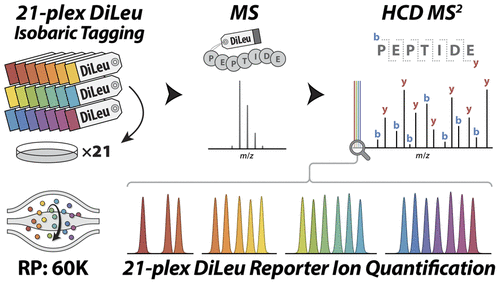Fast, unbiased proteome quantification without LC
Liquid chromatography–mass spectrometry (LC–MS) delivers sensitive peptide analysis for proteomics but requires extensive analysis time, reducing productivity. A recent paper by Meyer et al. titled “Quantitative shotgun proteome analysis by direct infusion” demonstrated that gas-phase peptide separation using direct infusion–shotgun proteome analysis enabled fast, unbiased proteome quantification without LC, and offered an approach to boost throughput, critical to studies that require analysis of thousands of proteomes.

